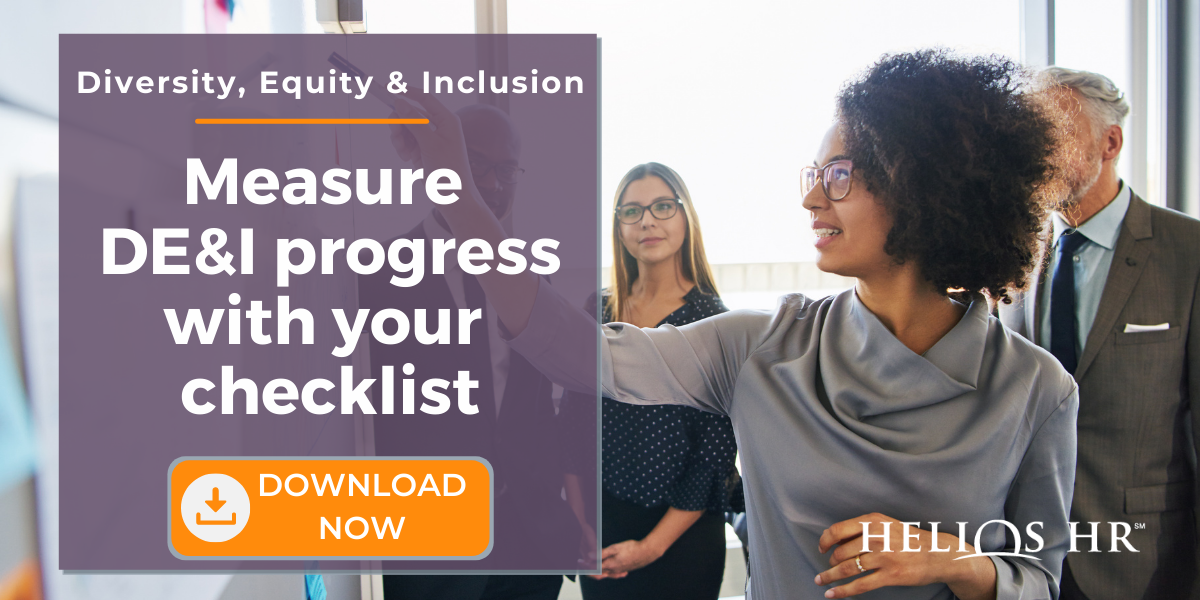By: Audrey Thurston Yilmaz, PHR on February 1st, 2023
The Best Start to Inclusion Training is a Training Needs Assessment
As the workplace becomes increasingly diverse, managing differences in the workplace is a priority. Further, recent events have sparked widespread recognition of the need for change. This has served as a catalyst for organizations to take collective action around internal efforts to increase diversity and inclusion. To adapt and meet the needs of a global workforce, organizations are focusing effort and resources toward diversity initiatives.
Diversity and Inclusion Training in the Workplace is a Critical Resource for Change
Diversity and inclusion initiatives play a significant role in change associated with globalization and adjusting to shifts in workforce demographics. This involves adapting to different group’s needs, cultures, languages, and work practices. Increasing awareness through inclusion training has provided opportunities to educate workers about issues of inequality and how to avoid discrimination in the workplace.
Conducting a training needs assessment (TNA) before introducing or refreshing diversity training is an important process for improving training success. Overall, workplace training is more effective when approached as a process and not an event. Any training program should be part of an ongoing initiative that takes a multi-phase comprehensive approach rather than as an event or ‘one-and-done.’
What is a Training Needs Assessment (TNA)?
As part of this phased approach, a training needs assessment is a useful tool to help develop the most effective and meaningful training within an organization. When developing a diversity and inclusion training program, the focus involves raising awareness and building skills, and where required, addressing an individual’s behaviors.
As HR consultants helping clients with D&I efforts, a training program can cover a broad range, based on unique characteristics like industry, company size, along with training subject matter covering physical and intellectual abilities, race, ethnicity, gender, sexual orientation, religion, etc.
A Training Needs Assessment Can Increase Learning by Reducing Problems with Resistance
Training needs assessment measures readiness for training at the organizational and individual levels. As it relates to diversity training, the assessment process uncovers diversity barriers and sources of resistance at the organizational and individual levels. Identifying and eliminating barriers and reducing resistance that can undermine training efforts, can increase long-term learning success.
Identifying Resistance
Diversity training subject matter presents unique training challenges. In Diversity Resistance in Organizations, Kecia Thomas observes that due to the emotional and political issues involved, there is heightened sensitivity and potential for resistance. There are a range of factors attributed to resistance and it helps to understand what resistance is, why it disrupts the training environment and how to address and eliminate it as a barrier to your D&I training efforts.
- Unconscious Bias. Attention to diversity and inclusion brings attention to bias and how people understand and interact with each other. This directly impacts the status quo, which can trigger fear of loss. When moving away from traditional ways (status quo) of thinking and conducting work is suggested, it can be viewed as a threat, or risk to established norms.
- Opinions and Individual Beliefs. Deeply held opinions and individual beliefs may increase the risk of resistance and interfere with learning. For example, an individual employee’s beliefs may conflict with diversity and inclusion training goals. Leaders and management may be reticent to embrace diversity if they believe it threatens their collective foothold. This can also be the case for individual contributors. Consequently, if training participants feel their personal beliefs are being called into question or contested, disengaged learners are the result, before the inclusion training even begins.
- Sensitive Subject Matter. Training participants may not be open to sensitive topics, including those associated with diversity training itself. This type of resistance may emerge because of perceptions about the role of employer and employee.
- “Reverse Racism” and Special Treatment. Fear of losing access to promotion and raises can trigger resistance with accusations of "reverse racism". To some, expanding opportunity to others based on race, ethnicity, gender, etc. is a threat. This form of resistance can have a backlash effect and derail diversity and inclusion efforts.
How to Develop a Needs Assessment for the Organization and Individuals
For learning to be achieved, the adult learner must be motivated and believe inclusion training is to their benefit. However, if an employee perceives diversity training as a threat, they are not likely to recognize the value. Resistance to diversity can be mitigated within an organization by taking the time to conduct a training assessment to determine where resistance may be occurring and how best to address that resistance.
Organizational Level Assessments
At the organizational level, an assessment may involve identifying patterns, perceptions, and aspects of a company culture that will impact diversity initiatives such as:
- Documentation of hiring practices. Data about hiring, demographics, etc. will reflect the degree to which leaders and frontline managers view diversity as a goal. This data may suggest for example, that training resources will benefit the organization most by first leveraging diversity efforts toward developing training that will support diversity-oriented hiring linked to manager success and rewards.
- Current demographics. An assessment of internal data, including demographics, work situations, and scenarios can help with developing and adapting a program to specific audience (department, location, team, etc.) needs.
- Organizational structure at the leadership level. For example, an organization stratified by race, gender, etc., with white males concentrated in leadership, may result in perceptions of support for diversity as superficial. In this scenario, the training assessment may suggest that training resources will benefit the organization most by focusing on diversity efforts with leaders, before developing employee training.
- Diversity-related complaints. Information around discrimination claims can reveal areas of an organization that has diversity issues, which others do not. This can be useful in the design phase to meet individual or departmental training needs.
Individual Level Assessment
This involves gauging openness to diversity with surveys, individual interviews, and focus groups.
- Surveys. For example, a survey to explore topics like social bias, openness to other cultures, races, and genders will provide information about employee attitudes towards diversity in general. Asking questions about situations and scenarios related to religious tolerance, disability accommodations, and same-sex marriage will help uncover attitudes that may impact one’s openness to diversity training.
- Focus groups and Interviews. Both interviews and focus groups provide an opportunity to measure the degree to which employees value diversity and diversity training in general. This can be particularly important for addressing the needs of adult learners in terms of perceived reward and benefit.
Diversity training is a critical resource in today’s workforce. Assessing readiness and taking appropriate steps to prepare for diversity training supports creating a culture of inclusion intended to embrace difference and discourage discrimination. To be effective in providing diversity training, we anticipate barriers.
As a human capital consulting firm, Helios HR approaches diversity training with the same rigor and mindfulness of our other skill-based training initiatives in terms of assessing training needs, design, and implementation. With adequate attention afforded throughout the training process, diversity training reinforces and encourages acceptance and tolerance of individual differences.
Need expert help on building an inclusive culture? Book a no-obligation consultation call with Helios HR now.





